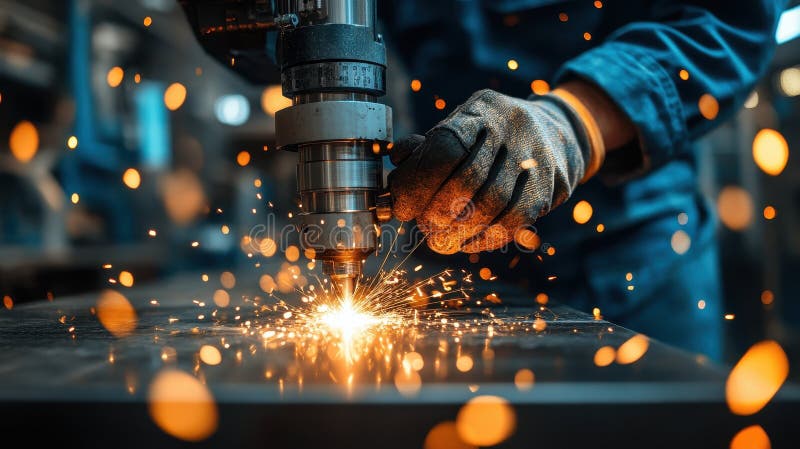The wave soldering process is a pivotal technique in the world of electronics manufacturing. This method plays an essential role in the assembly of printed circuit boards (PCBs), which are integral to countless electronic devices. Understanding the intricacies of wave soldering is crucial for both exporters and importers who deal with the global electronics supply chain.
The wave soldering process is known for its efficiency and effectiveness in creating reliable electronic connections. As technology continues to advance, this process remains an invaluable part of manufacturing, especially for mass-produced electronics. In this comprehensive guide, we’ll explore the details of the wave soldering process, its components, and its importance in the modern electronics industry.

What is Wave Soldering?
Wave soldering is a bulk soldering process used in the assembly of PCBs. This process involves the use of a molten wave of solder to form electrical connections between components and the PCB. It is particularly useful for through-hole components but can also be adapted for surface mount devices.
Components of the Wave Soldering Process
The wave soldering machine is at the heart of this process, featuring several key components: the fluxing unit, the preheat section, the solder wave trough, and the cooling area. Each component plays a specific role in ensuring the success of the process.
How Does Wave Soldering Work?
In the wave soldering process, PCBs pass over a liquid wave of solder. When the PCB contacts the wave, the solder adheres to the exposed metal surfaces, creating robust electrical connections. The wave itself is generated by the wave soldering machine, which moves the molten solder through a pump system.
Advantages of Wave Soldering
The primary benefits of the wave soldering process include its ability to handle a large volume of boards efficiently and its cost-effectiveness for mass production. This makes it a popular choice in industries requiring high throughputs, such as consumer electronics.
High Throughput
One of the standout advantages of wave soldering is its ability to produce a high volume of PCBs quickly. This efficiency is crucial for manufacturers looking to meet large orders and tight deadlines.
Reliability
The wave soldering process ensures reliable and consistent solder joints, which is vital for the performance of electronic devices. This reliability stems from the uniform application of solder throughout the board.
Challenges in Wave Soldering
Despite its advantages, wave soldering presents certain challenges. These can include component misalignment and issues with solder bridging. However, with proper technique and equipment calibration, these challenges can be mitigated.
Component Misalignment
Component misalignment can occur if the PCB is not properly held in place during the process. This can lead to faulty connections and even damage to the components themselves.
Solder Bridging
Solder bridging is another potential issue where excess solder creates unintended connections between closely spaced pins. Careful control of solder temperature and wave height is necessary to prevent this.
Modern Innovations in Wave Soldering
Advancements in technology continue to enhance the wave soldering process. For example, manufacturers are developing selective soldering machines that offer greater precision and flexibility, catering to increasingly complex PCB designs.
Selective Soldering
Selective soldering allows for targeted application of solder, ideal for boards with mixed technology components. This process minimizes the risk of thermal damage and helps reduce material waste.
Applications of Wave Soldering
The wave soldering process is predominantly used in the production of consumer electronics, automotive components, and industrial electronics. Each application benefits from the process’s efficiency and reliability.
Consumer Electronics
From smartphones to televisions, wave soldering is essential in the manufacturing of various consumer electronics. Its high throughput capabilities are crucial for meeting the demands of this fast-paced industry.
Automotive Components
The automotive industry relies on wave soldering for producing reliable electronic components used in vehicles, such as engine control units and infotainment systems.
Environmental Considerations
With growing awareness of environmental impact, the electronics industry is focusing on sustainable practices. Lead-free solders and energy-efficient machines are being employed to minimize the ecological footprint of the wave soldering process.
For more insights on sustainable electronics and how they shape the future of manufacturing, you can read our dedicated article on sustainable electronics.
Conclusion
The wave soldering process remains a cornerstone of electronics manufacturing, offering unparalleled efficiency and reliability. As technology evolves, so too does the sophistication of wave soldering, ensuring it continues to meet the demands of modern manufacturing.
The future of global supply chains and electronics manufacturing is bright, especially as we embrace innovations in processes like wave soldering. Learn more about these advancements in our article on the future of global supply chains.

FAQs
How is wave soldering different from reflow soldering?
Wave soldering is typically used for through-hole components, while reflow soldering is primarily for surface mount devices. Reflow soldering involves heating the entire assembly, whereas wave soldering involves passing the PCB over a molten solder wave.
Is wave soldering suitable for all PCB types?
While versatile, wave soldering is best for single-sided boards or those with predominantly through-hole components. Complex or double-sided boards may require additional techniques such as selective soldering.
What role does flux play in wave soldering?
The flux in the wave soldering process cleans the metal surfaces on the PCB, promoting proper solder adhesion. It also helps prevent oxidation during the soldering process.
For practical insights into prototype techniques in soldering, you might find this link valuable.


